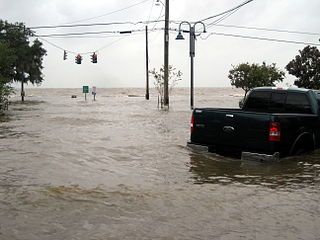From Guest Blogger Kimberly Grimms: The True Cost of Climate Change To World Resources

We live in a world of more than 7 billion people, where carbon dioxide emissions every year reach more than 32 billion tons; more than 300 million megawatt of energy used, and environmental safety is no guarantee. Many great ideas have been generated as solutions to perceived unsustainable resources for the coming years. There are also approaches and technology available now to overcome this world problem but marketers have rarely captured the exact environmental costs of these said “solutions.”
In its basic definition, world resources equal the environment. It is true that we live laying our foundations to the environment and so as the environment lay itself to us, humans. Evidently, a disparity between human and environment will cause an unparalleled precondition – climate revolution. The question remains, what is the true cost of climate change to the world resources?
Tree-stressed Earth
Trees are supposed to be one of the solutions to world hunger, but maintaining trees and forest areas is much more of an incomplete thought than most people suppose. Overall forest loss in the tropics has risen over the past 12 years and has reached a global loss of 888, 034 square miles of tree covered land areas. Of the four effects of forest disturbance – logging, wildlife, insect damage, storms – logging marks the top reason for woodland loss.
Also, in an online paper published by the journal science, researchers have provided remarkably detailed accounting of gains and losses in global forest areas from 2002 to 2012.
Experts are scuttling to measure the situation and predict how serious its effects can be. For a while, majority of the world population lived in cities and little did they know, they depended on trees more than ever. And notably, trees have been absorbing more than a quarter of the world’s carbon dioxide emission, one of the major food sources and major habitat of land biodiversity. Then, halting trees and forest increase will cause massive scale victims and nature imbalance. That, in turn, could fasten earth’s warming, unlocking more environmental risks.
Bio-diversity Thirst
Earth is called the living planet for its rich life diversity and climate change has been a major driver for biodiversity loss. An analysis by Intergovernmental Panel on Climate Change stated that at least 20% of global species are put into high risk of extinction perhaps by 21st century. A few effects of climate change to the environment constancy are acidify oceans, bleached corals, sea level rise, intense hurricanes and other (un)natural disasters. All these put animals and plant species in grave danger. Polar bears for example. Arctic sea is the polar bear’s feeding habitat and as the sea ice continues to retreat, two-thirds of the world’s polar bears could be lost by mid-century. Also, in a statement released by ISRS, just in 1998, 16% of world’s coral wealth are bleached and considered dead due to various human activities and nature disasters. This wiping out of reef ecosystem led down to habitat shift, worse, loss of other sea creatures. The narrowing margin of sea lives will predictably affect every aspect of the wanted sustainable life. Though, many ecological efforts have been made from various groups and advocates, these do not ensure total recovery of the biodiversity loss but efforts (hopefully) will be made as close to necessary as possible.
Exhausted Energy Reserves
In more recent years, conventional wisdom has taken hold that market forces would come to rescue and give solutions to an insatiable hunger for energy to fuel growing economies – energy sufficiency. Energy reserves can no longer meet the ballooning demand of humankind as fossil fuels have been exploited and damaged both by human and natural disasters. As people need more energy, more and more fossil fuels, coal and oil reserves are being exhausted. Same as the principle of lowest-hanging-fruit, human will exploit the resources available. Until a few years ago, some people tried to revolutionize the energy resource scene. Renewable energy was introduced.
Renewable energy is saying that enough wind and solar energy can power the world through wind turbines, geothermal, tidal and hydropower, no natural gas, no fossil fuels – only recyclable energies. That makes renewable energy interesting. However, on the other side, renewable energy is not always available. According to the U.S. Energy Information Administration, “With world GDP rising by 3.6 percent per year, world energy use will grow by 56% between 2010 and 2040”. Though, we have renewable energy, fossil fuels continue to supply almost 80 percent of the world energy use. And as estimated by the WorldoMeters.info, we have 14, 608 days left to the end of the world’s oil reserve.
It is true that efficient solutions will use less energy but in order to gauge this in terms of the sustainability we are aiming, we have to ground the term in realistic condition. Remember that spending more and building technology that might cause further damage to the environment and to the world’s resources, do not mean combating unsustainability. To quote Tyler Caine in his article Efficiency versus Using Less, “Sustainability is not a technological fix to supplement a wasteful lifestyle.” Using less, care for nature and actions in fight of the unprecedented climate change are.
There are countless costs of climate change to the world resources and listed above are just a few. Various people create incentives for restoration and sustainable world resources but we cannot combat perceived unsustainability in the near future when we cannot even combat the very root of the problem – climate change and “certain” human activities. Before thinking about the solution for human convenience, think of the solutions for the true costs of the climate change to the world resources. Indeed, we have finite wherewithal – trees, livestock, energy, nature – but we can make it sustainable and enough.
